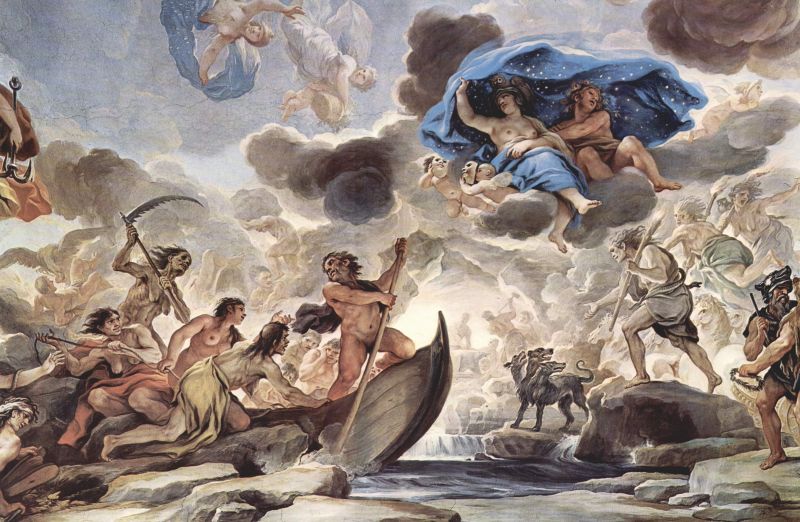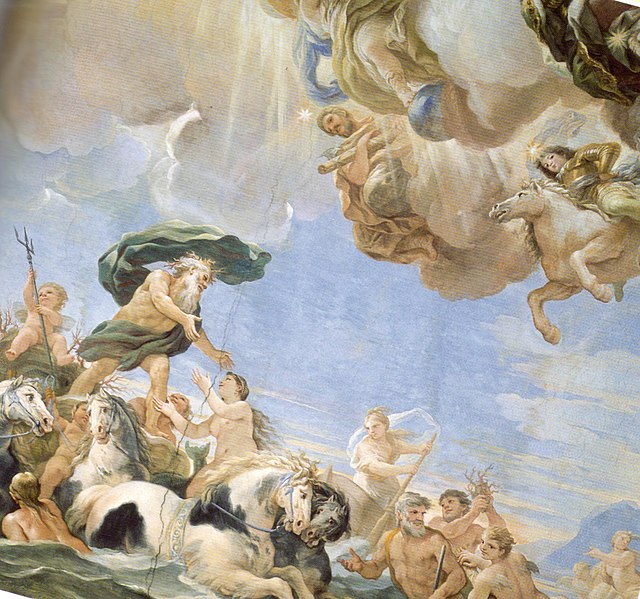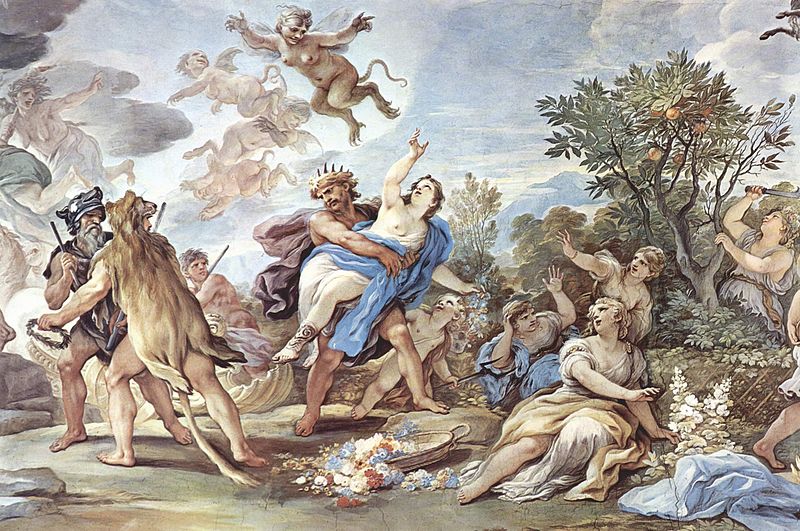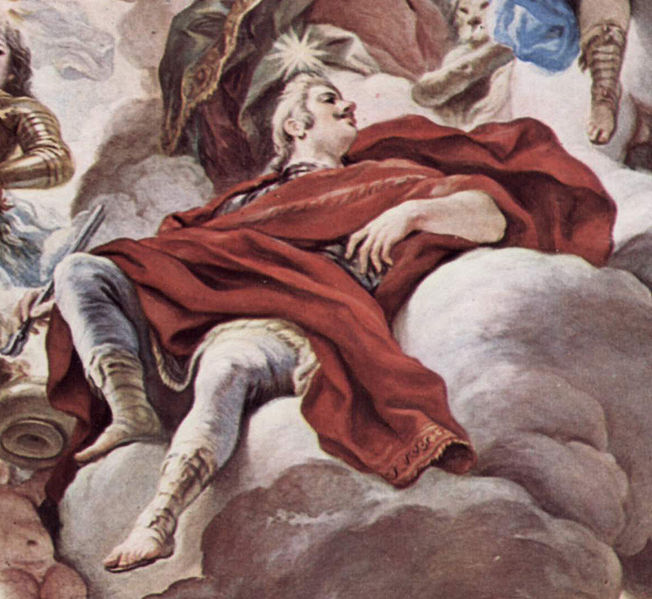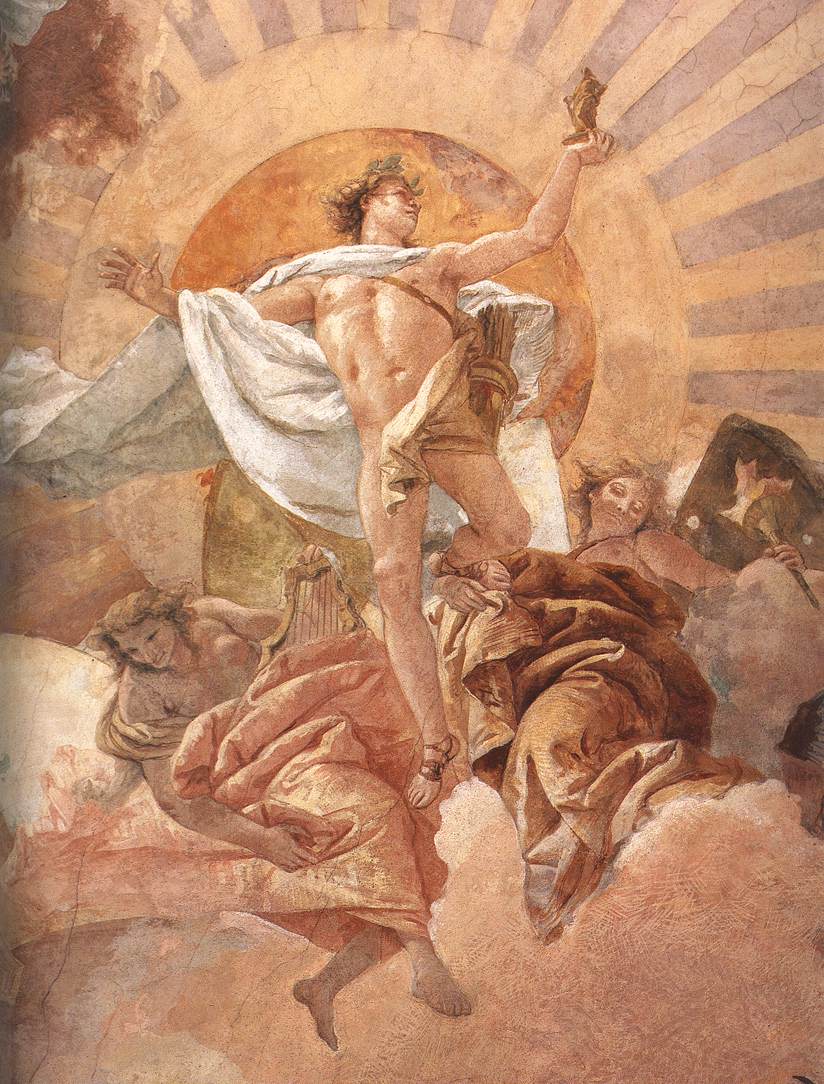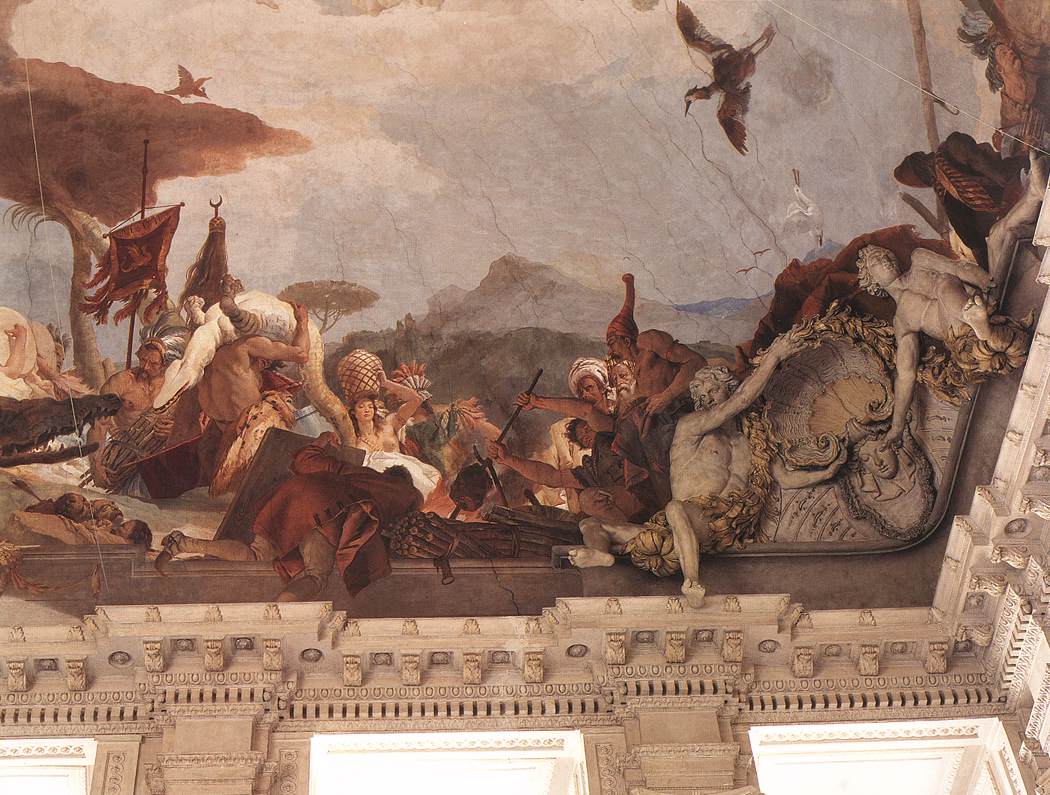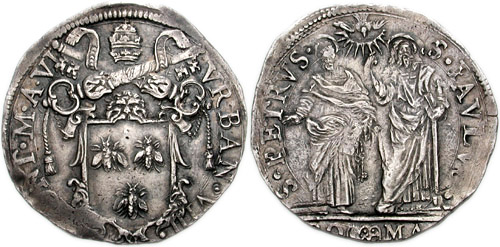Edited May 10, 2013
Let's look again at paintings in the Palazzo Medici-Riccardi.
Let's look again at paintings in the Palazzo Medici-Riccardi.
To view part I click here (blog in June 2012)
Giordano Luca, the gallery frescoes in the Palazzo Medici-Riccardi (1682)
Ceiling decoration of the Gallery (detail)
Ceiling decoration of the Gallery (detail)
Triumph of the Medici in the clouds of Mount Olympus, fresco in the Palazzo Medici-Riccardi, 1684-1686.
Ceiling decoration of the Gallery (detail)
Allegory of human life and the dynasty of the Medici, ceiling decoration of the Gallery (detail)
Frescoes in the gallery of the Palazzo Medici-Riccardi in Florence scene: The man in the middle of his life
Ceiling decoration of the Gallery (detail)
Rape of Proserpine, ceiling decoration of the Gallery (detail)
The Apotheosis of the Medici: Cosimo III sat central between his two sons and his brother below him, Palazzo Medici-Riccardi
A Prince-Bishop is a bishop who is a territorial Prince of the Church on account of one or more secular principalities, usually pre-existent titles of nobility held concurrently with their inherent clerical office. http://en.wikipedia.org/wiki/Prince-Bishop
In December 1750, Tiepolo, arrived in Würzburg where, at the invitation of Prince-Bishop Carl Phillip von Greiffenclauwas to fresco the large dining room - known as the Kaisersaal, or Imperial Hall - in the newly-built Residence of the Prince-Bishops designed by the architect Balthasar Neumann (1687-1753).
Giovanni Battista Tiepolo, Apollo and the Continents
Giovanni Battista Tiepolo, Apollo and the Continents ( detail)
Giovanni Battista Tiepolo, Apollo and the Continents (America, left-hand side)
Giovanni Battista Tiepolo, Apollo and the Continents (America, right-hand side)
Giovanni Battista Tiepolo, Apollo and the Continents (Africa, left-hand side)
Giovanni Battista Tiepolo, Apollo and the Continents (Africa, right-hand side)
Giovanni Battista Tiepolo, Apollo and the Continents (Asia, obelisk group)
Giovanni Battista Tiepolo, Apollo and the Continents (Asia, figure of Asia)
Giovanni Battista Tiepolo, Apollo and the Continents (Europe, overall view)
Giovanni Battista Tiepolo, Apollo and the Continents (Europe, detail)
The Barberini were a family of the Italian nobility that rose to prominence in 17th century Rome. Their influence peaked with the election of Cardinal Maffeo Barberini to the papal throne in 1623, as pope Urban VIII. Their urban palace, the Palazzo Barberini, (completed in 1633 by Berini), today houses Italy's Galeria Natzionale d'Arte Atica (National Gallery of Ancient Art).
http://en.wikipedia.org/wiki/Barberini_family
Barberini coat-of-arms (three bees) surmounted by papal tiara and crossed keys on coin struck for Pope Urban VIII.
Pietro Da Cortona, Allegory of Divine Providence and Barberini
Palazzo Barberini, Rome
Pietro Da Cortona, Allegory of Divine Providence and Barberini (detail)
Palazzo Barberini, Rome
Again Borgia family.
Saint Francis Borgia, S.J., 4th Duke of Gandia was a Spanish Jesuit and third Superior General of the Society of Jesus. He was canonized on 20 June 1670 by Pope Clement .
The hereditary Spanish title duke of Gandia was created in 1485 by Ferdinand II of Aragon. According to the catholic Encyclopedia, this was a purchase of a title by Pope Alexander VI for his son Pier Luigi (Pedro Luis).
The dukedom went to Pier Luigi's brother (or half-brother, mothers unknown) Giovanni. He was assassinated, and his young son became Duke. The fourth duke was the religious figure Francesco Borgia. He became a Jesuit, but after the death of his wife with whom he had a large family; the eldest son Carlos, later viceroy of Portugal, became the fifth duke. The sixth duke's younger son Gaspar de Borjia Velasco became a bishop and diplomat and cardinal.
http://en.wikipedia.org/wiki/Dukes_of_Gand%C3%ADa
Francis Borgia
Francis Borgia
Andrea Pozzo, Allegory of the Jesuits' Missionary Work
Andrea Pozzo, Allegory of the Jesuits' Missionary Work
Andrea Pozzo, Allegory of the Jesuits' Missionary Work, detail
Andrea Pozzo, Allegory of the Jesuits' Missionary Work,detail
Andrea Pozzo, Allegory of the Jesuits' Missionary Work, detail
Andrea Pozzo, Allegory of the Jesuits' Missionary Work, detail
Andrea Pozzo, Allegory of the Jesuits' Missionary Work, detail



